pp. 17-21
Amit Mewara1 Sandhya Sharma2
1Research Scholar, Suresh Gyan Vihar University, Jaipur
2Associate Professor, Suresh Gyan Vihar University, Jaipur
Abstract
The information rates and channel limit of a wireless Multiple Input Multiple Output (MIMO) Orthogonal Frequency Division Multiplexing (OFDM) framework can be enhanced by executing a dynamic connection adjustment calculation (Link Adaption Algorithm). Since a solitary kind of adjustment in modulation can’t fulfill every working state of a correspondence framework we require versatile balance coding algorithm i.e. Adaptive Modulation Coding (AMC). We have implemented a kind of AMC plan alluded to as Spatially Adaptive Modulation and Coding (SAMC) plan. This technique implementation can be done in two stages. In the first stage, it hunt down the modulation scheme with the most extreme estimation of contention of the computed complex estimations of a parameter known as PPSNR (post processing Signal to Noise Ratio). The second stage includes the utilization of a suitable Modulation and Coding Scheme (AMC) based on the value of PPSNR yielded by the selected configuration, through a lookup table specified in the base examination paper.
Keyword: Adaptive Modulation, QPSK, BPSK, QAM, OFDM, Channel Modulation, Spatially Adaptive Modulation and Coding (SAMC).
INTRODUCTION
These days the wireless communication has included around two third of world population, which is almost linearly proportional to development both in technical field with expansion in client stipulate. Wireless communication a quick rising innovation captivated the users as well as the growing huge businessperson, research followers and enthusiastic design engineers all around the world. As the demand of high quality service in next generation wireless communication systems, a high performance of data transmission requires an increase of spectrum efficiency and an improvement of error performance in wireless communication systems.
We propose a multi-user multiple-input multipleoutput (MIMO) Orthogonal frequency Division multiplexing (OFDM) system with adaptive modulation and coding improve system capacity with maintaining good error performance. In MIMOOFDM wireless systems Data rates and channel capacity can be improved through the use of Adaptive Modulation and Coding (AMC). OFDM
Abbreviation of orthogonal frequency division multiplexing, which transmits tremendous amount of digital information over the radio wave. OFDM works up to expectations by means of separating the radio waves into numerous smaller sub signals and afterward transmit at the same time at distinctive frequencies to the recipient. OFDM is a broadband multicarrier balance system that offers predominant execution and advantages over more established, more customary single-bearer balance techniques on the grounds that it is a superior fit with today’s high velocity information prerequisites and operation in the UHF and microwave range. The main advantages of OFDM are its multipath delay spread resistance and effective spectral utilization by permitting covering in the frequency domain. The channel execution may be profoundly fluctuating over the subcarriers and fluctuates from symbol to symbol [1]. In the event that the same altered transmission plan is utilized for all OFDM subcarriers, the error probability decreased slowly by increasing SNR. In this manner, if there should be an occurrence of frequency selective fading the error probability diminishes gradually with expanding normal sign to
noise ratio (SNR) [2]. Adaptive modulation scheme is used to evaluate the channel or link performance and power output in the RF link. By analyzing the channel condition and calculating the parameters like PPSNR, channel bandwidth, modulation, antenna size, link configuration, diversity schemes, transmission power and more it becomes easy to take decision for better communication.
RELATED WORK
In [13] MIMO OFDM system, which can give critical space diversity and battle multipath fading, subsequently drawing attention for the outline of future broadband wireless communication system have been depict. Adaptive modulation technique is generally utilized in link adaption to enhance the performance. With AMC, the modulation and coding scheme (MCS) is adaptively chosen in view of channel quality indication (CQI). Here, a comprehensive analysis of mapping between signal to interference in addition to noise ratio (SINR) fed beck by the mobile station and MCS to be utilized to transmit information, while considering crossover ARQ (HARQ) operation is given. In [14] A number of AMC technologies have been explored lot of researchers. An efficient technique on the channel capacity of different mobile transmission technology can be found in [13]. It is demonstrated that when the transmission rate fluctuates constantly as indicated by the channel quality, the impact of fluctuating the transmit power in the meantime is extremely constrained. In this paper, researcher has proposed a effective MCS selection algorithm for MIMO-OFDM system taking in consideration of effective transmission likelihood, considering into record the HARQ operation. The goal is to amplify the system throughput and keep up the bit error rate (BLER) at an adequate degree. They assess the execution of MIMO-OFDM system with improvement of AMC and HARQ. In [15] a downlink performance analysis of a link adaption (LA) calculation connected to a MIMO-OFDM Physical Layer (PHY), which is a mainstream possibility for future era cellular communication system, is given. The new channel adaption algorithm endeavors to amplify throughput and adjustment between different modulation and coding schemes in blend with both space-time block codes (STBC) and SNR is the key factor for spatial multiplexing (SM)and H matrix determinant; the parameters which are found to have the most huge impacts on the system throughput. In [17] another Link adaption (LA) methodology called the adaptive modulation, coding, and spatial mode (AMCS) scheme has been presented for MIMO bit interleaved coded orthogonal frequency division multiplexing
(MIMO BIC-OFDM) system. The AMCS strategy can give both insignificant performance degradation and noteworthy throughput gain by controlling the spatial streams. This paper presents another parameter called instantaneous Bit error rate(I-BER). Based on the value of I-BER, the proposed AMCS scheme picks a suitable modulation, coding, and spatial mode (MCS) to enhance the system performance along with maintaining the quality of service (QOS).
PROPOSED WORK
BLOCK DIAGRAM AND DESCRIPTION
We consider a MIMO OFDM system with 2 transmitter and 2 receiving system sending information over 64 subcarriers. The transmitted OFDM symbol is said to by x. at receiving end sequence received is given by:
![]()
Where y is the received symbol sequence at the receiver side, H is the 2X2 channel matrix between the transmitter and the get receiver, and n is the Additive White Gaussian Noise (AWGN) at the receiver side. Here q is the quantity of transmitter and receiving antenna.
The channel matrix between every transmit/receive pair is thought to be independent and symmetric complex Gaussian random variable with unity variance. ES is the transmit energy.
The above equation can be written as:
![]()
Where

Where [H]-1 is the pseudo inverse of [H].
Therefore,
![]()
Block Diagram of Proposed Model
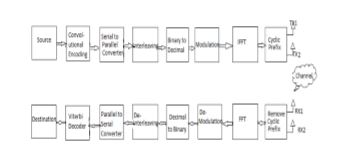
Figure 1.1 System Block Diagram
In Transmitter Section the source is a stream of random raw binary data having 96 bits. The encoder keeps M past information bits in memory. Depending on the value of SNR obtained, the code rate of the Convolutional encoder is set. The rates used are 1/2, 2/3 and ¾. Serial to parallel converters are used to convert serial bit stream to parallel data before interleaving block. Parallel processing is fast and efficient. Interleaving is a process of mixing or shuffling the input data bits. It is the plan of the bits in a non-coterminous manner.
Binary to Decimal Converter change binary data in decimal numbers depending upon the selected modulation scheme. The regulation plans utilized are BPSK, 4-QAM, 16-QAM, and 64-QAM. The modulation scheme is selected from the table 1.1. IFFT changes frequency signal into time space signal. IFFT of size 64 is utilized. Cyclic prefix is the process of shifting first one fourth of data bit sequence at the end of bit sequence.
The addition of cyclic prefix acts as a guard interval. The channel supposed to be on a multipath fading Rayleigh channel. At the receiver section just opposite action performed to recover the original signal. Cyclic prefix is evacuated as it is not part of the information or data stream.
FFT changes the time space signal into frequency domain signal. FFT size utilized is 64. Demodulation is just reverse process of Modulation. As we have used here Convolutional coding to encode the data therefore to decode the data only Viterbi decoded can be used.
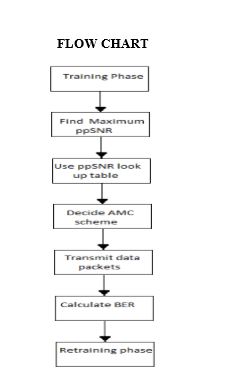
Figure: 1.2 Flow Diagram of SAMC Algorithm
IV. RESULT AND SIMULATION
PARAMETER AND ASSUMPTIONS
In this Transmission Bandwidth 20 MHz, Target BER 10 -3, Number of Transmit and Receive Antenna 2, Total Number of OFDM Subcarriers 64, Subcarrier spacing 25 MHz, Cyclic extension duration 10 μs and
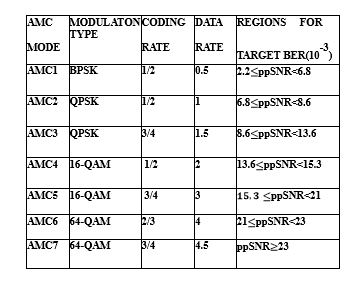
Table 1.1 Code rate and ppSNR
RESULT
The research paper shows the Performance comparison of BER using SAMC and non adaptive modulation and Throughput comparison of SAMC and non adaptive modulation.
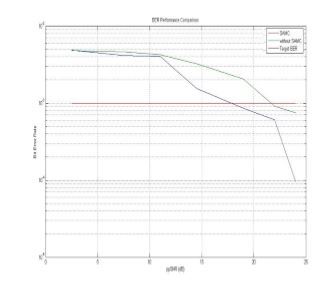
Figure 1.3 Performance comparison of BER using SAMC and non-adaptive modulation
The figure 1.3 portrays the BER analysis and its performance with the help of SAMC algorithm against a non adaptive modulation technique. BPSK was utilized for the non-adaptive modulation. From the diagram we comprehend that at low ppSNR ranges, performance of both, SAMC and nonadaptive modulation is almost same, despite the fact that SAMC has a somewhat better performance. In any case, as the ppSNR increases gradually, the performance graph additionally changes. At high ppSNR range, the BER of SAMC is lower than that of and non-adaptive modulation. This demonstrates that with utilization of adaptive modulation, more prominent lapse lessening is conceivable while transmission of a message through an uproarious or noisy channel.
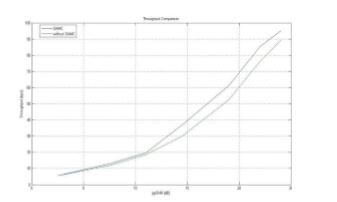
Figure 1.4 Throughput comparison of SAMC and non-adaptive modulation
The figure 1.4 portrays the throughput performance of the SAMC calculation against a non-adaptive balance (BPSK). From the chart we comprehend that at low ppSNR ranges (i.e. ppSNR<5), both, SAMC and non-adaptive modulation perform like one another. Be that as it may, as the ppSNR builds, the performance additionally changes. At high ppSNR range, the BER of SAMC is lower than that of and non-adaptive modulation. This is on the grounds that the BER execution of the SAMC calculation is superior to the non-versatile plan. This demonstrates that with utilization of adaptive modulation, more prominent throughput can be accomplished while transmission of a message through an uproarious channel.
CONCLUSION
A Spatially versatile Adaptive Modulation and Coding scheme as proposed in was executed. Its execution against a non-adaptive Modulation Scheme was looked and reviewed at and its outcomes graphs were examined. The outcomes demonstrated that contrasted with a non-adaptive Modulation plan, the actualized calculation performed better. In this manner AMC taking into account channel conditions can viably lessen the measure of errors that take spot amid the information transmission through a loud channel. Likewise AMC can deliver higher throughput, accordingly effectively helping in transmission of bundles of higher size. We have shown the result in graphical representation and the result we have achieved is satisfactory and comparatively much better than the previous work done by the researchers. Here we have focused on the ppSNR calculation and on the basis of ppSNR value we have selected the modulation technique. The accuracy of transmitting data is quite satisfactory. The BER we have achieved is drastically reduced i.e. 0.00001. MIMO frameworks help to transmit greater
amount of information in a less time duration. This subsequently builds the speed of transmission of information. OFDM systems are vigorous against inter symbol interference (ISI) and fading created by multipath engendering.
REFERENCES
[1] A.Sohail and M.N.Jafri, “Adaptive OFDM over Frequency Selective and Fast Fading Channel Using Blockwise Bit Loading Algorithm”, IEEE International Conferenece on Wireless and Optical Communication Networks,pp. 1-4, July 2007.
[2] A.Cyzlwik, “Adaptive OFDM for wideband radio channels”, Global Telecommunications Conference, vol 1, pp713-718, Nov 1996.
[3] Hlaing Minn 2002, Cheng yang Li 2003.
[4] International Journal of Technology Enhancements And Emerging Engineering Research, Vol 2, Issue 8 39 Issn 2347-4289, 2014.
[5] Encyclopedia of Wireless and Mobile Communications DOI: 10.1081/E-EWMC120043484 Copyright ª 2008 by Taylor & Francis. [6] Allen, B.; Ghavami, M. Adaptive Array Systems: Fundamentals and Applications; John Wiley & Sons Inc.: 2005.
[7] George D. Sworo, Moshe Kam, Kapil R. Dandekar, „Performance of Link Adaptation Algorithms and Reconfigurable Antennas for MIMOOFDM Wireless Systems‟, 46th Annual Conference on Information Sciences and Systems (CISS), 2012, pp1-5.
[8] Goldsmith, and S. Chua, “Variable-Rate VariablePower MQAM forFading Channels,” IEEE Transactions on Communications, Vol. 45, No 10, Oct. 1997.
[9] K. Sung, S. Chung, J. Heo, and I. Lee, “Adaptive Bit-InterleavedCoded OFDM with Reduced Feedback Information,” IEEE Transactions on Wireless Communications, Vol. 55, No. 9, Sept. 2007.
[10] IEEE 802.16 Working Group, “IEEE Standard for Local and metropolitanarea networks,” Nov. 2004.
[11] J. G. Proakis, Digital Communiations, 4th Edition, McGraw-Hill, 2000.
[12] Quarteroni and F. Saleri, “Scientific Computing with Matlab,”Springer, Aug. 2003.
[13] “Analysis of Modulation and Coding Scheme Selection in MIMO-OFDM Systems”, Shiming Liu, Xing Zhang, Wenbo Wang; First International Conference on Communications and Electronics, 2006. ICCE ’06.
[14] M-S. Alouini and A. J. Goldsmith, “Capacity of Rayleigh Fading Channels Under Different Adaptive Transmission and Diversity-Combining Techniques”, IEEE Trans. Veh. Technol., vol. 48, pp. 1165-1181, July 1999
[15] C. Han, S. Armour, A. Doufexi, K. H. Ng and Joe McGeehan, “Link adaptation performance evaluation for a MIMO-OFDM physical layer in a realistic outdoor environment,” Vehicular Technology Conference, vol. 74, pp.1-5, Issue September 2006.
[16] C. Han, A. Doufexi, S. Armour, K. H. Ng, J. McGeehan, „Adaptive MIMO OFDMA for Future Generation Cellular Systems in Realistic Outdoor Environment, IEEE VTC Spring, May 2006
[17] C. Shin, H. Kim, K. Jin, and H. Park, “Highthroughput low-complexity link adaptation for MIMO BIC-OFDM systems,” IEEE Trans. Commun.,vol. 59, pp. 1078- 1088, Apr. 2011.
[18] K. Song, A. Ekbal, J. M Cioffi, and S. T. Chung, “Adaptive Modulation and Coding (AMC) for Bitinterleaved Coded OFDM (BIC-OFDM),” IEEE Transactions on Wireless Communications, Vol. 5, No. 7, Jul. 2006.
[19] Qing Li, Bin Li, Yu Liu, Lin Zhang, “An Adaptive Modulation Selection Scheme Based on Error Estimating Coding”. Seventh International Conference on Mobile Ad-hoc and Sensor Networks,2011
